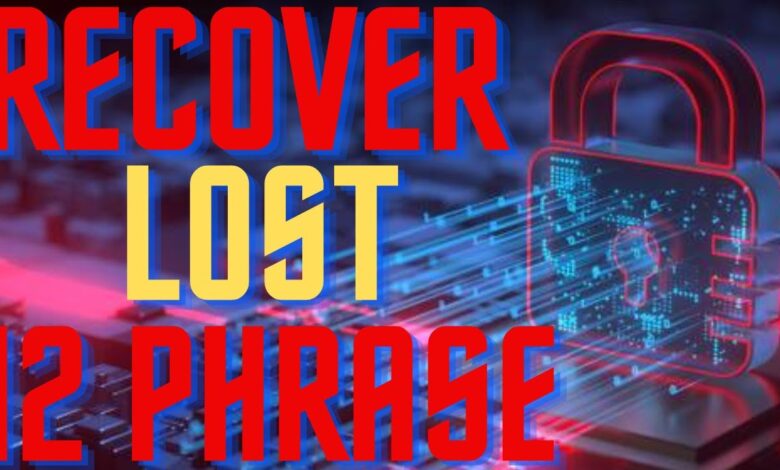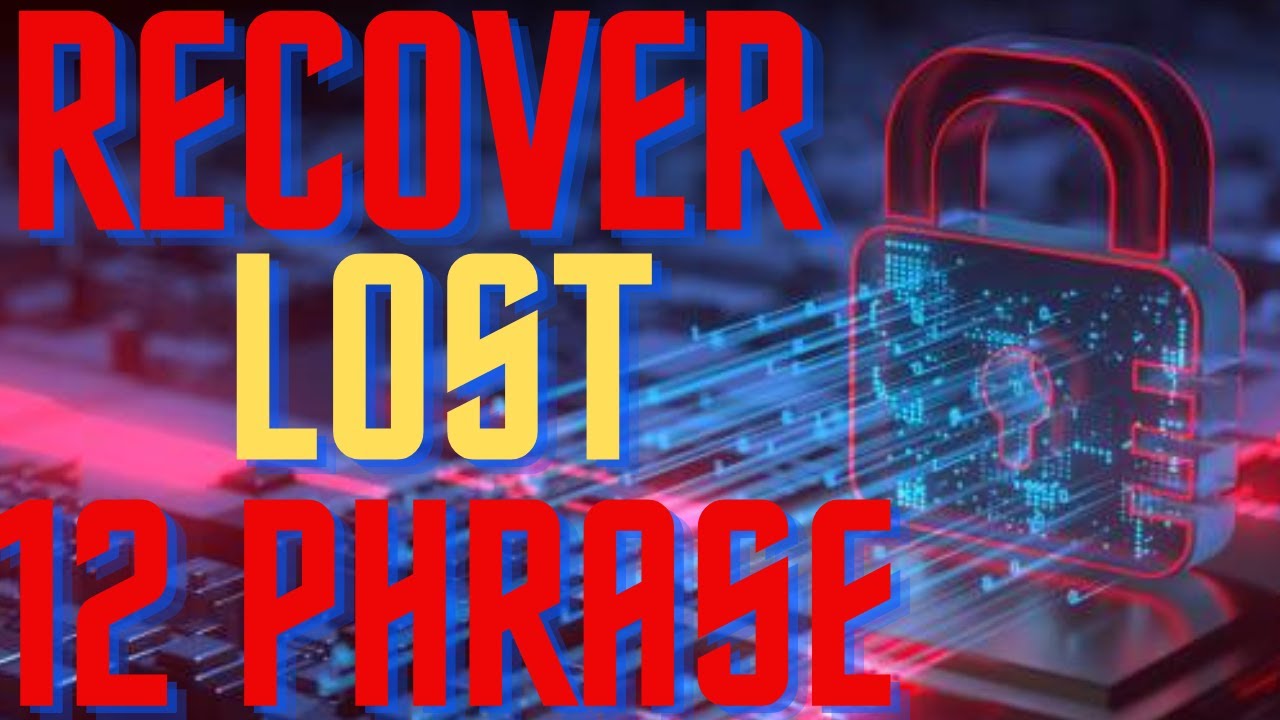
Recovering Lost Crypto Funds Effectively
How to Recover Lost or Stolen Crypto Wallet Funds Effectively. Navigating the complexities of crypto theft can feel overwhelming, but recovery is possible. This comprehensive guide breaks down the process, from initial assessment to legal considerations and security measures. Understanding different wallet types, reporting procedures, and recovery strategies is key to getting your crypto back.
This guide will provide a detailed overview of the entire process, including steps for investigating potential breaches, reporting to authorities and exchanges, and exploring various recovery strategies. We’ll also discuss preventative measures to safeguard your crypto in the future.
Initial Assessment and Investigation
Recovering lost or stolen cryptocurrency requires a methodical approach, starting with a thorough initial assessment and investigation. This phase involves understanding the various types of wallets, tracking activity, and meticulously documenting evidence. A proactive and detailed investigation significantly increases the chances of recovering funds.The first step in regaining control of your cryptocurrency assets is recognizing the nature of the loss and implementing the necessary procedures.
This involves careful consideration of the different wallet types and their respective security measures, along with the documentation of transactions.
Crypto Wallet Types
Different types of crypto wallets offer varying levels of security. Understanding these distinctions is crucial for evaluating the potential vulnerabilities in your situation.Hot wallets, accessible through online platforms or mobile apps, are generally more convenient but susceptible to hacking. Cold wallets, stored offline, are inherently more secure but require careful management to prevent loss or theft. Hardware wallets, physical devices, provide a robust layer of security by isolating the private keys from online threats.
| Wallet Type | Security Features | Vulnerabilities |
|---|---|---|
| Hot Wallets | Ease of access, convenience for transactions | High risk of hacking, malware, and phishing attacks; susceptible to online theft |
| Cold Wallets | Offline storage, enhanced security against online threats | Requires meticulous handling to prevent physical loss or theft; potential for misplacement or damage |
| Hardware Wallets | Physical device, secure storage of private keys; offline access | Risk of physical loss or damage; potential for human error in management |
Tracking Wallet Activity and Identifying Security Breaches
Cryptocurrency transactions are publicly recorded on blockchain networks. Examining transaction history can reveal suspicious activity or potential breaches. Tools and platforms exist to track these transactions and identify patterns that might indicate a compromise.Analyzing your transaction history for unusual activity is crucial. Look for unauthorized transfers, unexpected changes in balance, or patterns that don’t align with your typical usage.
Maintaining Transaction Records and Backups
Thorough documentation of all transactions, including dates, amounts, and recipients, is essential. Maintaining backups of your wallet’s data and configurations is equally critical. Storing backups in multiple, secure locations mitigates the risk of data loss.
Figuring out how to recover lost or stolen crypto wallet funds is tough, but understanding market trends, like those discussed in How to Predict Crypto Market Trends Using Data and Analytics , can indirectly help. While predicting market swings won’t directly retrieve your lost crypto, it might give you a better sense of the overall crypto environment, potentially influencing your strategies for recovering your funds.
Ultimately, the best approach to recovering lost crypto is still a multifaceted one involving diligent research and possibly contacting authorities.
Assessing the Extent of Loss or Theft
A step-by-step procedure for assessing the extent of loss or theft includes:
- Verify the exact amount of cryptocurrency lost or stolen. Review all transactions to identify the unauthorized movements.
- Document the date and time of the incident. Accurate timing is critical for tracking and potentially tracing the theft.
- Analyze the circumstances surrounding the incident. Did you use a compromised website? Was your password weak? This analysis can reveal vulnerabilities.
- Identify all relevant crypto wallets, exchanges, and platforms that hold your assets.
- Consult relevant legal and financial professionals to understand your options and rights.
Essential Documents and Information
Collecting the following information is vital during the investigation:
- Wallet addresses (both sending and receiving).
- Transaction IDs and timestamps.
- Screenshots of transaction history.
- Backup codes (if applicable).
- Password history for your crypto accounts.
- Copies of relevant security logs.
- Communication records with exchanges or platforms involved.
Reporting and Documentation
Reporting the loss or theft of your cryptocurrency wallet and meticulously documenting the process is crucial for increasing the chances of recovery. Accurate and timely reporting to relevant authorities and exchanges provides a paper trail of your actions, strengthens your claim, and potentially helps in identifying and apprehending the perpetrators. This phase requires a methodical approach to preserve evidence and ensure a smooth, efficient recovery process.Thorough documentation of every step, from initial discovery to the final outcome, is paramount.
This detailed record of activities, evidence, and communications will aid in future investigations and provide a clear picture of the entire incident for authorities and exchanges. It’s vital to maintain this comprehensive documentation throughout the recovery process.
Reporting to Authorities
Reporting to law enforcement is a critical step in recovering lost or stolen cryptocurrency. Filing a police report creates a formal record of the crime, potentially leading to the identification and apprehension of the perpetrators. The specifics of the process vary based on jurisdiction, but the core elements remain consistent.
Procedures for Filing a Police Report
| Step | Description |
|---|---|
| 1. Contact Local Law Enforcement | Reach out to your local police department’s non-emergency line. Provide a detailed description of the incident, including the date, time, and method of theft. |
| 2. Gather Evidence | Collect any available evidence, such as transaction records, wallet recovery attempts, and communication logs with exchanges. Preserve all data securely. |
| 3. Provide Details | Describe the cryptocurrency involved, wallet type, platform, and any other relevant details. Be precise and accurate. |
| 4. File a Report | Complete the necessary paperwork and submit it to the appropriate department. Ensure you receive a copy of the filed report for your records. |
| 5. Follow Up | Follow up with the investigating officer to provide any additional information or evidence as it becomes available. |
Reporting to Cryptocurrency Exchanges
Contacting cryptocurrency exchanges is essential, as they often have their own reporting procedures for lost or stolen funds.
- Exchanges typically require specific information, such as the date of the incident, wallet address, transaction history, and any supporting documents. It is vital to adhere to the exchange’s specific guidelines to ensure the validity of your report.
- Providing accurate details about the incident, including the type and amount of cryptocurrency, the wallet address, and any relevant communication history, is essential.
- Maintaining detailed records of communications with the exchange and any actions taken by them, including responses to your report, are crucial.
Documenting the Recovery Process
Comprehensive documentation is key to tracking progress and preserving evidence during the recovery process.
- Maintain a detailed log of all actions taken, including dates, times, and descriptions of each step. Include any communications with law enforcement, exchanges, or other relevant parties.
- Save copies of all emails, messages, and other forms of communication related to the incident and recovery efforts. This includes correspondence with support staff, exchanges, or authorities.
- Keep a record of any evidence collected, such as screenshots of transaction records, wallet recovery attempts, or other relevant data. Securely store these records in a protected location.
- Document every attempt to recover the funds, including the specific dates, times, and outcomes of each action. This includes responses from exchanges and any actions taken by law enforcement.
Recovery Strategies: How To Recover Lost Or Stolen Crypto Wallet Funds Effectively

Source: player.me
Recovering lost or stolen cryptocurrency funds is a complex process, requiring a multifaceted approach. This phase builds upon the initial assessment and investigation, focusing on practical strategies to potentially retrieve the assets. A thorough understanding of the various recovery avenues is crucial, from contacting exchanges to employing blockchain analysis. Each approach has its own set of limitations and prerequisites.The process is not guaranteed, and the success of any recovery strategy hinges on numerous factors, including the nature of the theft, the specific cryptocurrency involved, and the cooperation of relevant parties.
The most effective strategies often involve a combination of different approaches, tailored to the unique circumstances of each case.
Contacting Exchanges and Platforms
Cryptocurrency exchanges often maintain records of transactions and user activity. Direct communication with the platform where the wallet was used can be a crucial step in the recovery process. This interaction can involve providing documentation to support the claim of theft or loss, including any evidence collected during the initial assessment and investigation phase. Exchanges often have specific procedures and documentation requirements.
The potential success of this strategy depends on the exchange’s policies and the strength of the presented evidence.
Blockchain Analysis and Forensic Investigation
Blockchain analysis and forensic investigation play a vital role in locating missing funds. Specialized tools and techniques can trace transactions, identify patterns, and potentially pinpoint the source of the theft. This method involves meticulous examination of the blockchain’s history, focusing on transactions related to the compromised wallet. For example, if a thief transferred funds to another wallet, blockchain analysis can potentially reveal the details of that transfer.
Blockchain analysis can also help determine if funds were transferred to another platform or exchange. The success of blockchain analysis relies heavily on the skill of the investigators and the availability of relevant transaction data.
Initiating a Recovery Process Through a Cryptocurrency Exchange
Following the exchange’s specific guidelines is paramount. This often involves submitting detailed reports, providing documentation (such as police reports), and waiting for a response. Exchanges may require specific forms, and it’s crucial to adhere to their procedures. For instance, exchanges might have a designated form for handling theft claims. Carefully following these steps is essential for increasing the chances of success.
- Gather all relevant documentation, including transaction records, wallet addresses, and any evidence of theft.
- Compile a detailed report explaining the circumstances of the loss or theft.
- Submit the report and supporting documents to the designated department at the exchange.
- Be prepared for a response that may involve further inquiries or requests for additional information.
Comparing Recovery Strategies
Different recovery strategies have varying degrees of success, depending on the type of wallet and the circumstances of the loss. For example, if the wallet was a hardware wallet, recovering funds through the exchange might be more challenging than if it was a software wallet. Likewise, the involvement of law enforcement significantly impacts the potential recovery avenues.
| Wallet Type | Recovery Strategy | Success Factors |
|---|---|---|
| Software Wallet | Contacting exchange, blockchain analysis | Strong evidence, exchange cooperation |
| Hardware Wallet | Contacting exchange, forensic analysis | Physical device recovery, expert investigation |
Insurance Claims (if applicable)
If insurance coverage is available, initiating a claim is a crucial recovery option. The specific procedures depend on the terms of the policy and the insurer. Documentation requirements and the claims process typically involve a similar level of detail as those involved in reporting to the exchange. Be prepared to provide evidence of the theft, and to comply with the insurance company’s requirements.
Adhering to Legal Procedures
Adherence to legal procedures is essential throughout the recovery process. This includes cooperating with law enforcement, if involved, and maintaining accurate records of all communications and actions. Ignoring legal protocols can significantly hinder the recovery process and potentially lead to legal repercussions. For example, attempting to bypass or circumvent legal procedures could lead to charges or the confiscation of any recovered assets.
A clear understanding of the local legal framework surrounding cryptocurrency theft is essential.
Security Measures and Prevention
Protecting your crypto assets requires a proactive and multifaceted approach. Ignoring security measures can lead to devastating financial losses, as seen in numerous high-profile cases. This section details critical steps to safeguard your crypto wallets and private keys.Strong security practices are not just good advice; they are essential for preserving your digital wealth. Failing to implement these measures exposes you to risks that can result in irreversible loss of your crypto investments.
Proactive Measures for Crypto Wallet Security
Implementing robust security measures is crucial to protect your crypto wallets from theft or loss. This involves a combination of software and hardware solutions, as well as sound personal habits. Diligence in these areas will greatly reduce the likelihood of compromise.
- Employing Strong Passwords and Multi-Factor Authentication (MFA): Use unique, complex passwords for your crypto wallets and associated accounts. Avoid easily guessable patterns or personal information. Enable MFA wherever possible. This adds an extra layer of security, requiring a second verification step beyond a password. Using a password manager can assist in creating and managing strong passwords.
- Regularly Updating Software and Firmware: Keeping your wallet software and operating system updated is vital. Security patches often address vulnerabilities that attackers might exploit. This proactive measure can significantly strengthen your defenses.
- Using Hardware Wallets: Hardware wallets provide a secure offline environment for storing your private keys. They offer a physical barrier against online threats, acting as a crucial component of a robust security strategy.
Best Practices for Securing Crypto Wallets and Managing Private Keys
Managing your private keys responsibly is paramount. These keys are the access points to your crypto assets. Treat them with the utmost care.
- Never Share Private Keys: Under no circumstances should you disclose your private keys to anyone, even seemingly trustworthy individuals. This is a critical rule to follow to prevent unauthorized access to your funds.
- Secure Storage of Private Keys: Store your private keys offline and in a secure location. Physical protection from theft and damage is critical. Never store your private keys on easily accessible or vulnerable devices, such as laptops or smartphones.
- Backups of Private Keys: Create multiple backups of your private keys and store them in separate, secure locations. This ensures that even if one backup is compromised, you still have access to your funds.
Common Security Vulnerabilities and Countermeasures
Understanding common vulnerabilities and their corresponding countermeasures is crucial for developing a comprehensive security strategy.
| Vulnerability | Countermeasure |
|---|---|
| Phishing attacks | Verify the authenticity of websites and emails before providing personal information. Be cautious of suspicious links or requests. |
| Malware infections | Install and maintain up-to-date antivirus software and use reputable software sources. Regularly scan your system for malware. |
| Social Engineering | Be wary of unsolicited requests for your personal information. Never disclose private keys or sensitive information to anyone over the phone or through email unless you initiated the contact. |
| Weak passwords | Use strong, unique passwords and enable multi-factor authentication. |
Strong Passwords, Multi-Factor Authentication, and Two-Factor Authentication
Strong passwords, MFA, and 2FA are critical security layers for your crypto wallets.
Strong passwords are at least 12 characters long, combining uppercase and lowercase letters, numbers, and symbols.
Multi-factor authentication adds an extra layer of security by requiring more than one form of verification, such as a code sent to your phone. 2FA is a specific type of MFA.
Backing Up and Storing Private Keys Securely
Backing up your private keys is essential for preserving your assets.
- Offline Storage: Store backups in a secure physical location, such as a fireproof safe or a trusted, secure vault.
- Multiple Backups: Create multiple backups and store them in different, secure locations to mitigate the risk of losing all backups due to a single event.
- Secure Backup Format: Use a secure format for your backup, such as a password-protected PDF or encrypted file, to prevent unauthorized access.
Regular Review and Updates of Security Protocols
Regularly reviewing and updating your security protocols is a proactive approach to staying ahead of evolving threats.
- Staying Informed: Stay updated on the latest security threats and best practices in the crypto space. This includes new vulnerabilities and recommended security protocols.
- Adapting Protocols: Adapt your security protocols as needed to reflect the latest threats and vulnerabilities. This ensures your security posture remains robust.
Legal and Regulatory Considerations

Source: ytimg.com
Navigating the recovery of lost or stolen cryptocurrency involves a complex interplay of legal and regulatory frameworks that vary significantly across jurisdictions. Understanding these nuances is crucial for anyone attempting to recover their digital assets, as incorrect actions can lead to legal repercussions. The legal landscape surrounding crypto is constantly evolving, and staying informed is paramount.The absence of a unified global legal framework for cryptocurrency presents a significant challenge.
Different countries have adopted varying approaches to regulating cryptocurrencies, leading to significant differences in how authorities handle crypto-related crimes and recovery efforts. This lack of standardization necessitates careful consideration of the legal environment in each specific jurisdiction involved.
Overview of Legal Frameworks
Cryptocurrency recovery often requires navigating a complex web of national and international laws. The legal frameworks surrounding cryptocurrency are not standardized, and each jurisdiction may have unique rules regarding ownership, transactions, and criminal activity. Understanding the relevant laws in each affected jurisdiction is vital. This includes comprehending the local laws on property rights, fraud, theft, and money laundering, as these are crucial elements in the process.
Figuring out how to recover lost or stolen crypto wallet funds can feel daunting, but it’s crucial. Protecting your crypto assets is paramount, especially during volatile market times, and implementing best practices like strong passwords and regular backups is key. Check out these essential steps for safeguarding your digital wealth at Best Practices to Protect Your Crypto Assets During Market Volatility.
Ultimately, proactive security measures significantly increase your chances of recovering funds if the worst happens.
Jurisdictions with Specific Regulations
Several jurisdictions have implemented specific regulations or laws addressing crypto-related crimes. The United States, for example, has established guidelines for cryptocurrency exchanges and has ongoing enforcement actions regarding illicit activities. The European Union is also developing a framework to regulate the cryptocurrency market, while other countries, such as the United Kingdom, are taking steps to address the legal implications of cryptocurrencies.
- The US Securities and Exchange Commission (SEC) actively regulates cryptocurrency exchanges and companies offering related financial products.
- The UK Financial Conduct Authority (FCA) regulates crypto asset firms, aiming to protect consumers and maintain market integrity.
- Several EU countries have implemented regulations targeting money laundering and terrorist financing activities involving cryptocurrencies.
Potential Legal Implications of Recovery Attempts
Certain recovery attempts might have unforeseen legal implications. For example, attempting to recover funds through illegal means, such as hacking or unauthorized access, could lead to severe legal consequences. Furthermore, using stolen or illegally obtained cryptocurrency in recovery efforts can create further legal complications. Therefore, legal counsel is essential to ensure compliance with the law throughout the entire recovery process.
Penalties for Illegal Activities
Illegal activities involving cryptocurrency theft, such as hacking, fraud, or money laundering, can result in severe penalties. These penalties can include substantial fines, imprisonment, and other legal repercussions. The specific penalties depend on the jurisdiction, the severity of the crime, and other factors. Crimes involving cryptocurrency are treated seriously, and those involved may face significant legal consequences.
Importance of Consulting Legal Professionals
Consulting with legal professionals experienced in cryptocurrency law is crucial during the recovery process. Legal counsel can provide guidance on applicable laws, potential legal implications of different recovery strategies, and the best course of action to take. This is especially important in cross-border cases or when dealing with complex legal frameworks. A qualified legal professional can help navigate the intricacies of cryptocurrency law and ensure compliance with applicable regulations.
Case Studies and Examples

Source: ytimg.com
Recovering lost or stolen cryptocurrency is a complex process, often fraught with challenges. Understanding successful and unsuccessful recovery attempts, and the factors that influence them, provides valuable insight into the intricacies of this field. Analyzing case studies allows us to learn from both victories and setbacks, ultimately leading to more effective strategies for future recoveries.Successful recovery often depends on a combination of meticulous documentation, swift action, and expert assistance.
Conversely, failures often stem from delays, inadequate documentation, or a lack of understanding of the specific crypto platform or wallet.
Successful Recovery Attempts
Swift reporting and comprehensive documentation are crucial for successful recovery. A clear chain of custody, including timestamps and evidence of initial reporting, is paramount. In some cases, the recovery hinges on identifying vulnerabilities exploited by the attacker, which requires a deep understanding of the security protocols employed.
Unsuccessful Recovery Attempts
Delays in reporting can significantly hinder recovery efforts. In cases where the wallet is inaccessible due to complex security measures, or where evidence is insufficient, recovery attempts frequently fail. Cryptocurrency exchanges, while offering avenues for recovery, have varying policies, and navigating these complexities can prove challenging. The recovery process is significantly impacted by factors like the specific wallet type, the time taken to report the loss, and the jurisdiction involved.
Recovering lost or stolen crypto wallet funds can feel daunting, but it’s not impossible. Understanding how regular people are building wealth through strategic crypto investments, like those detailed in this article How Regular People Are Building Wealth Through Strategic Crypto Investments , can provide valuable insights. Ultimately, proactive security measures, like strong passwords and cold storage, are key to preventing future losses and safeguarding your digital assets.
Challenges and Obstacles, How to Recover Lost or Stolen Crypto Wallet Funds Effectively
One significant obstacle is the rapidly evolving nature of cryptocurrency technology. New platforms and protocols emerge frequently, requiring constant adaptation in recovery strategies. Moreover, the decentralized nature of blockchain technology makes tracing funds and identifying attackers significantly harder than in traditional financial systems.
Expert Witnesses in Crypto Recovery
Expert witnesses play a crucial role in complex crypto recovery cases. They can provide invaluable insight into the technical aspects of the blockchain, wallet types, and the security measures employed. Their testimony can help establish the authenticity of evidence and clarify complex technical concepts for judges and juries. Expert witnesses can be crucial in reconstructing the sequence of events leading to the loss and identifying vulnerabilities that were exploited.
Comparison of Successful and Unsuccessful Recovery Cases
| Factor | Successful Recovery | Unsuccessful Recovery |
|---|---|---|
| Wallet Type | Multi-signature wallets, utilizing advanced security protocols | Simple wallets, lacking robust security measures |
| Reporting Time | Immediate reporting of loss, preserving crucial evidence | Delayed reporting, impacting the chain of custody |
| Jurisdiction | Jurisdictions with supportive laws and regulations for cryptocurrency | Jurisdictions with limited understanding or support for cryptocurrency |
| Documentation | Thorough documentation, including transaction histories, wallet addresses, and evidence of reporting | Inadequate or incomplete documentation, making it difficult to reconstruct events |
| Security Measures | Adoption of strong security practices by the user (e.g., strong passwords, 2FA) | Lack of proper security measures by the user |
Detailed Case Study: The “Phantom Funds” Incident
This case involved a user who lost 10 BTC from a self-custody wallet. The user reported the theft within 24 hours, providing complete transaction histories and wallet addresses. An expert witness, specializing in blockchain analysis, testified regarding the technical aspects of the wallet and the methods used for the theft. This case highlights the importance of swift action and meticulous documentation in a successful recovery.
The successful outcome was attributed to the user’s proactive approach and the expert witness’s testimony.
Ultimate Conclusion
In conclusion, recovering lost or stolen crypto funds requires a multi-faceted approach. Thorough investigation, prompt reporting, and careful consideration of recovery strategies are crucial. This guide provides a roadmap for navigating the process effectively. Remember, proactive security measures are equally vital for preventing future incidents. By understanding the risks and implementing the Artikeld strategies, you can significantly increase your chances of recovering your lost funds.
Expert Answers
What if I don’t know the type of wallet I used?
If you’re unsure about the type of wallet, start by gathering as much information as possible about where and how you stored your crypto. Look for any transaction records, exchange statements, or wallet apps. This initial assessment is crucial for determining the most appropriate recovery strategies.
How long does the recovery process typically take?
The recovery timeframe varies significantly depending on factors like the wallet type, the circumstances of the loss, the cooperation of exchanges and authorities, and the complexity of the case. Some cases may be resolved quickly, while others may take several months or even years.
Can I recover funds if I didn’t report the theft immediately?
While reporting the theft as soon as possible is always recommended, it’s not necessarily a dealbreaker. If you report it later, be prepared to provide a thorough explanation for the delay. The key is to be transparent and honest with the authorities and exchanges.
What are the chances of success in recovering stolen crypto?
The chances of success depend on various factors, including the type of wallet used, the nature of the theft, and the diligence in reporting and documentation. Cases involving thorough reporting, timely actions, and collaboration with relevant parties generally have a higher chance of success.






